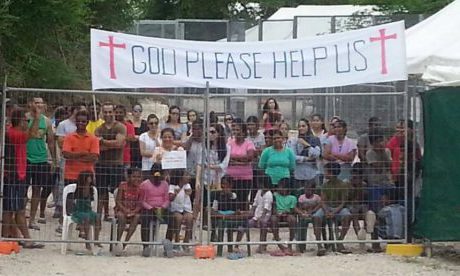What if our government really wanted to save money?
As well as going after $6.7 billion in its omnibus savings bill, it could go after the billions more it costs to run our immigration detention centres: $9.2 billion in the past three years, $3.9 billion to $5.5 billion in the next four, according to the most complete accounting yet of the costs normally hidden in inaccessible parts of the budget.
It comes as an Audit Office report identifies the cost per offshore detainee: a gobsmacking $573,100 per year.
For that price – $1570 per day – we could put them up in a Hyatt and pay them the pension 15 times over.
It costs less than half that, $200,000 a year, to house a typical onshore prisoner; a mere fraction of that, $72,000 including super, to pay a typical full-time worker, and just $20,700 a year to pay a full pensioner.
Ninety-nine per cent of the population don’t come anywhere near $573,100 a year in income or cost. The census stops asking when income sails past $156,000.
But the comparison with wages isn’t strictly valid. It understates the outrageousness of the $573,100 price tag.
The $573,100 isn’t being paid in return for a detainee’s labour, in return for a contribution to society, as are wages.
It is being paid to prevent the detainee contributing to society.
It is what economists call a deadweight loss.
We get nothing in return for it, apart from less of what we could have had.
And perhaps because it is not meant to make economic sense (and perhaps because the Department of Immigration and Border Protection has operated as something of a law unto itself), it hasn’t even made financial sense.
The Audit Office says the department breached public service guidelines by not conducting proper tenders for the contracts to provide services to Manus Island and Nauru, at times falsely claiming it faced urgent and unforeseen circumstances. Continue reading
Sources
- The Sydney Morning Herald article by Peter Martin, economics editor of The Age
- Image: France 24, The Observers
News category: Features.




